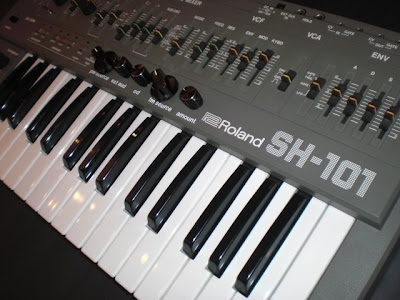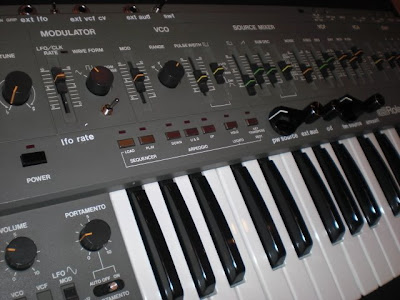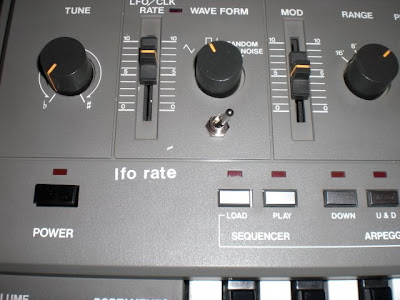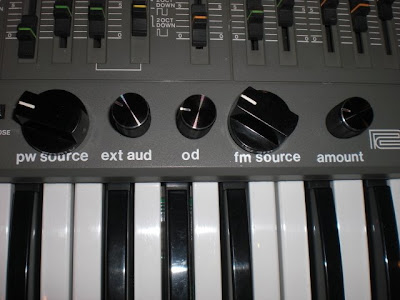
"It's back, and better than ever
The original Korg WAVEDRUM amazed the music world back in 1994. This legendary musical instrument was instantly famous for its innovative design, performance possibilities, and unique sounds. Well, hang on tight; the power-packed, affordable next-generation WAVEDRUM is here today and ready to make musical history. Again.

WAVEDRUM – Unprecedented sound, response, and performance
Sonically richer, programmable, and intensely sensitive, this 2nd generation WAVEDRUM is bursting with more than enough power and expression to create its own musical legend. The extreme dynamic range challenges the response of an acoustic instrument. WAVEDRUM responds instantly to any and all playing styles, from subtly-nuanced tapping and stroking to aggressive, rhythmic assaults. From traditional acoustic percussion instruments to unique sounds previously impossible to obtain, WAVEDRUM serves up an enticing treasure trove of sounds. With WAVEDRUM, you're always in control. Instruments that normally require special techniques to play, such as tabla, conga, etc., can be played with ease. Create your own unique performance style, filled with unparalleled levels of expression and originality. Built to travel, the compact and lightweight WAVEDRUM is ideal wherever your musical dreams take you – from casual playing through to a full-on recording session or a live concert performance.
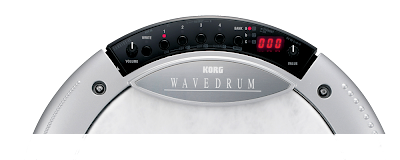
Open the door to new musical journeys
The new Korg WAVEDRUM delivers inspiration and satisfaction to creative performers seeking new realms of expressiveness and sounds. Moving beyond traditional drum and percussion sounds, WAVEDRUM also provides totally new and unique sounds that are not available in the real world, and offers new ways of playing to achieve new levels of musical expression. Imagine changing the pitch randomly with each hit, or playing melodic phrases simply by choosing a musical scale and applying pressure to the head. Imagine no more, WAVEDRUM does it all. While opening new doors, WAVEDRUM is faithful to its roots. Traditional hand-drum techniques, such as adding pitch and tonal changes to a strike by pressing the head, have been previously unobtainable on an electronic instrument. No longer. WAVEDRUM can process and respond to these intimate performance gestures as no other instrument can. These same techniques provide a wealth of performance possibilities. For example, WAVEDRUM can produce sitar and tambura sounds at the same time. You can produce tambura sounds alone by hitting the head, adding the sitar sounds by applying pressure to the head before hitting it. Applying further pressure can change the pitch of the sitar within the selected scale. Only WAVEDRUM is able to offer such astounding versatility.

Multiple sensors deliver previously unimaginable expressiveness
Acoustic percussion instruments produce sound naturally, in direct response to a physical impact, be it gentle or abrupt. WAVEDRUM, although an electronic musical instrument, creates sound exactly the same way. The head and rim pickups are directly used as a sound source to be processed by the DSP (Digital Signal Processing) algorithms, and they also trigger the PCM sound engine. Together with the pressure sensor under the head, the WAVEDRUM responds to each and every subtle finger and hand motion (hitting, rubbing, scratching etc). as well as to the traditional hand drum techniques of open shot, slap shot, heel and toe, mute, etc. Of course, the WAVEDRUM responds not just to your hands, but to other playing materials as well, such as sticks, mallets, and brushes. The rim has two types of notches, small and large, and these can be used to elicit a tremolo-type effect by scratching with sticks, etc. Combining the rim sounds with the head sounds can create an even richer, more original performance.
DSP synthesis and PCM samples combine for endless sonic exploration
The WAVEDRUM contains 36 DSP algorithms to conjure an abundance of synthesis methods; analog, additive, non-linear, physical modeling, etc. Using these building blocks, you can create various instrument sounds, natural sounds, or purely synthetic sounds – in addition to WAVEDRUM’s own unique voice. The PCM sound engine – the other important part of WAVEDRUM's sound creation system – contains 200 sampled sounds; 100 for the head, and 100 for the rim, with velocity-switching capabilities. Certain algorithms allow you to combine a specific DSP method and a PCM instrument to the head, and assign a different combination to the rim. This method of controlling multiple sounds within a single program delivers a fantastic playing experience, rich in sound. In other algorithms, the velocity and tone of the strike are used to control the PCM sound, creating a responsive interaction that far surpasses any sample-playback device, one rivaling that of an acoustic instrument.

Planet-wide percussion
WAVEDRUM begins with a foundation of traditional pop/rock drum sounds such as snares, kick drums, tom toms, and more. WAVEDRUM also opens new vistas of sound, delivering a wealth of percussion sounds from many eras and cultures around the globe and throughout time. Ethnic percussion instruments, although seemingly simple in structure and performance, are capable of expressing the complex emotions of a culture. These include popular percussion instruments such as cajons, congas and tablas; metallic instruments such as cowbells, and triangles, along with rare ethnic percussion sounds. With WAVEDRUM, you have instant access to instruments such as the udo, a clay pod percussion instrument; the jegog, a bamboo gamelan marimba from the island of Bali; a talking drum from Africa, gongs, and many other instruments that often require special playing skills. Not strictly limited to percussion sounds, WAVEDRUM includes stringed instruments such as the sitar, koto, and berimbau as well. For every sound, WAVEDRUM adds its own new modes of expression, in addition to faithfully re-creating the original sounds.
Enjoy 100 preset programs; create 100 programs that are all your own
The 100 preset WAVEDRUM programs range from high-fidelity emulative drum and percussion sounds to a world of new and unique sounds. There are a range of parameters available for editing and tweaking to create new sounds to suit your own music or style of playing. In addition to making changes to pitch, decay time, loudness, reverb, delay, and curve (intensity) of the pressure sensor, you can completely alter the sound by, for example, changing the head material parameter from skin to metal. The combination of DSP and sampled sounds can also be changed to create totally new sounds from scratch. These new programs (up to 100) can be stored in the user area. The WAVEDRUM also has a Live Mode, which can store up to 12 favorite programs (from the preset or user programs) for selection instantaneously during performance.

Jam-along functions for added fun
Sure, you can enjoy the WAVEDRUM just by playing the sounds alone, but the dynamic and interactive WAVEDRUM adds some special features that provide jam-along abilities for fun or practice. Practice your paradiddles or simply wail away along to 100 loop phrases from various musical genres. Using the AUX input, you can mix in the signal from any audio source – CD, MP3 player, or even an additional WAVEDRUM. The options are endless.
Ready, Set, Go
Portable, compact, and lightweight, WAVEDRUM is ready for any musical outing. Hold WAVEDRUM on your lap, or play it standing like a hand drum. Place WAVEDRUM on an ordinary snare drum stand, or add WAVEDRUM to any electronic or acoustic drum kit. Use WAVEDRUM as part of a DJ set-up, or add a percussive element to your keyboard rig. With the optional high stand (Percussion Stand ST-WD), WAVEDRUM is the ideal accent for any vocalist or front person. Using the headphone output allows you to practice in private, anytime, anyplace – without fretting about the neighbors!
Synthesis:
DSP + PCM Combination
DSP Algorithms:
36 Total
PCM Instruments:
200 Total; 100 Head, 100 Rim
Programs:
200 Total; 100 Preset, 100 User
Loop Phrases:
100 Total; Various genres and tempos
Effects:
Reverb, Delay
Panel Controls:
Volume, Bank/Mode/Page select,
Program/Parameter select, Value control, Write
Input/Output jacks:
Output: L, R ¼" unbalanced
Phones: Stereo mini phone jack
AUX IN: Stereo mini phone jack
Display:
3-character 7-segment LED
Sampling frequency:
48 kHz
A/D, D/A conversion:
24 bit
Power supply:
DC9V 1.7A
Dimensions:
W x D x H: 13.74" x 13.54" x 2.95"
Weight:
4.41 lbs.
Included items:
AC Adapter, Tuning key, Allen wrench
Options:
Replacement Head HD-WD
Percussion Stand ST-WD
* Specifications and appearance are subject to change without notice for improvement."
Details and specs for the archives.










